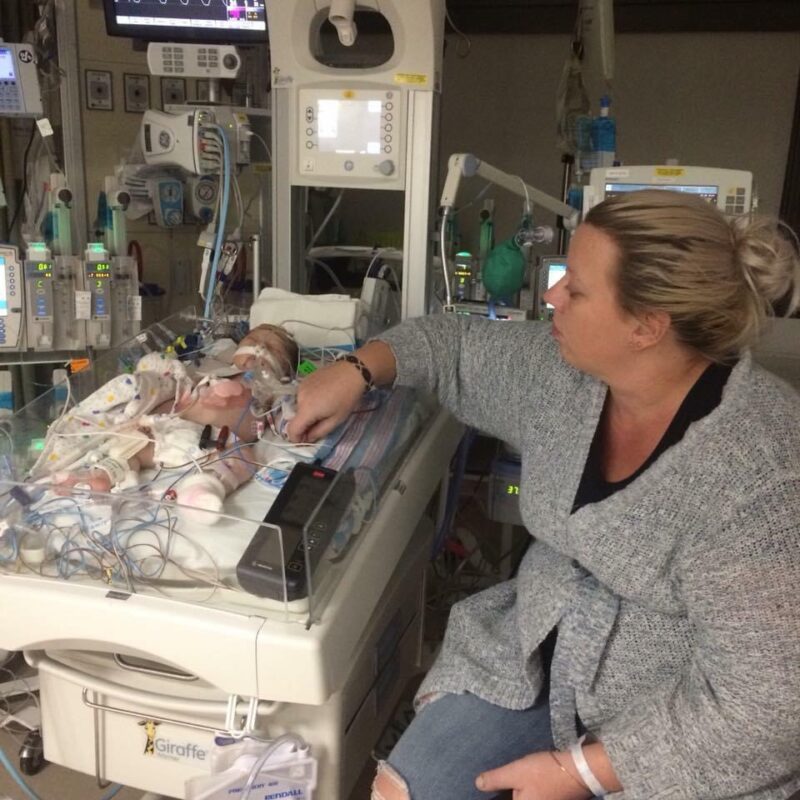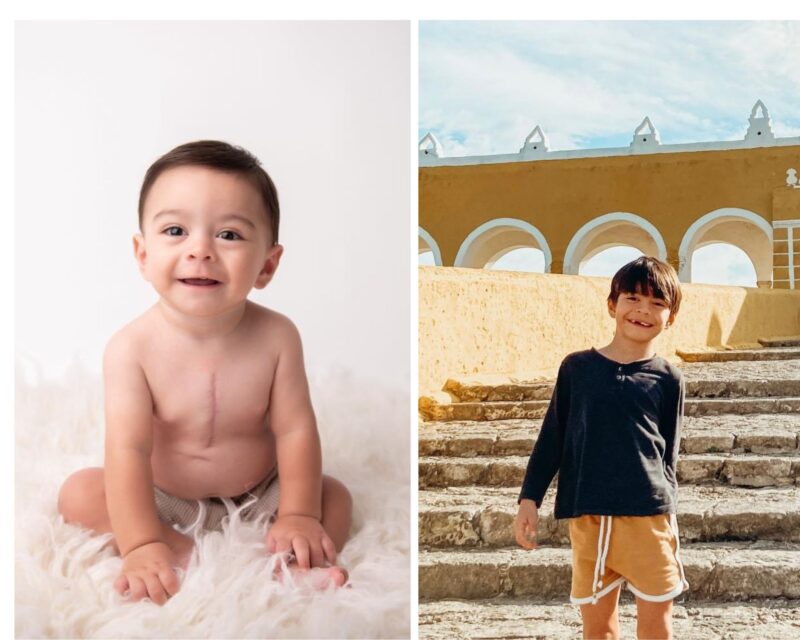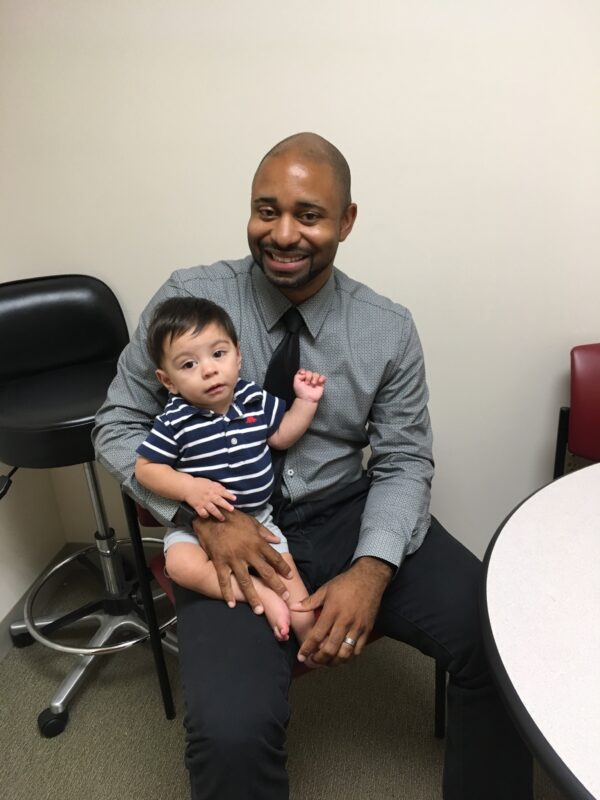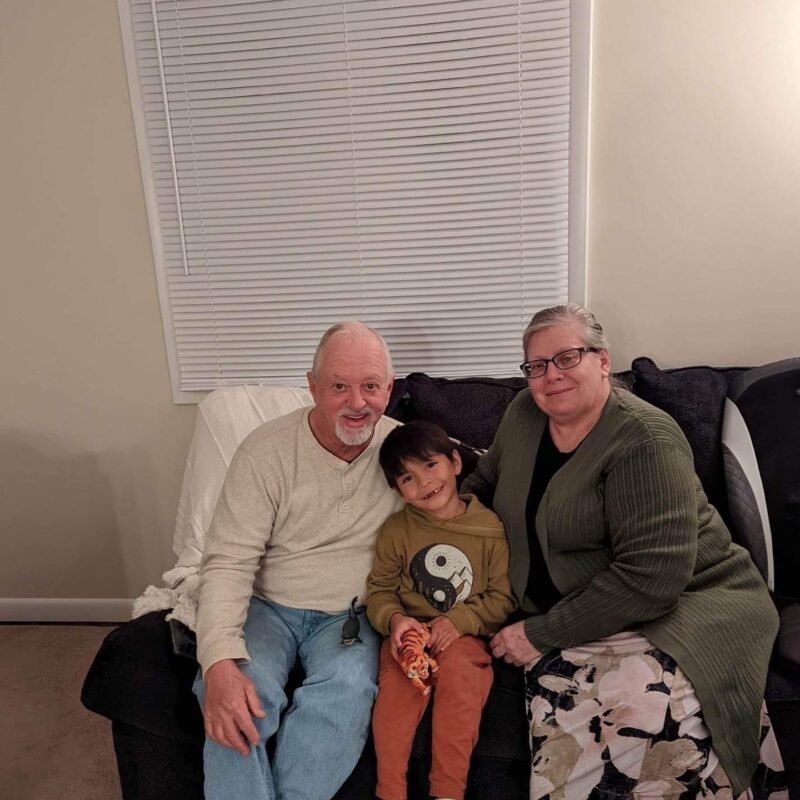
Leah is pictured here with Leo at 11 days old after his first open heart surgery.
Leonardo Velazquez Miller is an active, healthy 6-year-old who loves to swim and play soccer in his hometown of Playa Del Carmen, Mexico. Looking at him now you wouldn’t suspect he was born with Dextro-Transposition of the Great Arteries or d-TGA, a congenital heart defect (CHD) where the 2 main arteries carrying blood out of the heart – the main pulmonary artery and the aorta are switched in position or transposed.
Leo’s mom, Leah, had no idea anything was amiss when she was pregnant with him.
“We were living in Mexico at the time (2018), but I traveled back to the States where my parents lived for routine screens which were normal,” she said. “When I was 8 months pregnant, I moved back to the U.S. to give birth. Leo’s delivery was normal and there was no indication anything was wrong.”
Following Leo’s birth, doctors discovered he had very low oxygen saturation levels, so he was transferred to Akron Children’s for further testing.

Leo at 7 months old, 1.5 months after his second surgery to correct the narrowing of his arteries. On the right, Leo, 6 years old, pictured in Izamal, Mexico.
“We were shocked and scared,” said Leah. “We were expecting to leave the hospital with our healthy baby.”
Within a few hours of being at Akron Children’s an echocardiogram revealed d-TGA.
“Dr. (Brandon) Smith, pediatric cardiologist, told us Leo needed major surgery to correct the arteries,” said Leah. “It all felt very overwhelming, but Dr. Smith spoke confidently about the surgery. He said kids with d-TGA generally have good outcomes and we could expect him to run and play and be like other kids.”
Leo spent 10 days in recovery following his first surgery with cardiovascular surgeon Dr. Robert Stewart. Six months after the correction, Leo experienced a narrowing of his arteries which resulted in a second surgery to widen them.
“Approximately 10% of patients with d-TGA require a repeat operation with half being for pulmonary artery narrowing,” said Dr. Smith.
When Leo turned 1 his family relocated to his father’s native Mexico, although they return annually to see Dr. Smith at his Wooster office for routine cardiology checkups.

Leo returns to the U.S. annually for his follow-up appointment with his cardiologist Dr. Brandon Smith.
“They do a full workup which includes imaging, an echocardiogram and EKG,” said Leah. “So far nothing has changed, and he is doing great. He used to be on a heart medication for an arrhythmia, but he has been able to come off that.”
According to Dr. Smith, “In d-TGA, most arrhythmias occur in the immediate time period after surgery, and typically resolve as the heart recovers.”
Since kids born with complex heart defects are at an increased risk for developmental, learning and behavioral disorders, Leo is also seen annually by Akron Children’s neuropsychology providers.
“Leo has a deferred diagnosis of attention deficit hyperactivity disorder (ADHD) and he does occupational therapy in Mexico which helps keep him on track developmentally,” said Leah.
While there’s always a chance Leo’s arteries could narrow again necessitating another surgery, the chances are low at this point.

Leo visits his grandparents Ivan and Linda who live in Ohio.
“Leo is doing well from a heart perspective and ideally will require no further procedures,” said Dr. Smith. “Like all individuals with d-TGA, lifelong cardiology follow-up is needed to ensure that he continues to do well.”
Reflecting on those scary times in the NICU, Leah marvels at how far her son has come.
“He has no restrictions,” she said. “He is full of energy and keeps us on our toes. We are very thankful for the care he received and continues to receive from Akron Children’s.”
CHDs are the most common types of birth defects in the U.S, affecting about 40,000 babies annually. The good news is babies born with these conditions are living longer and healthier lives.
Learn more about Cardiology at Akron Children’s.








